Do you ever think about the backyard birds in Florida? Do you want to learn how to identify common backyard birds in Florida?
Making up bird feeders as well as watching what comes to visit is a lot of fun, but it’s even more fun if you know who they are. You may now learn about most popular birds which stopover your feeders or sit and play in your lawn in Florida.
Carolina Wrens and Mourning Doves are abundant in Florida throughout the summer.
Eastern Phoebes, Palm Warblers, and Yellow-rumped Warblers are extra prevalent in Florida throughout the winter.
If you’re prepared to go yard birding in Florida, keep reading to learn how to recognize birds as well as attract additional birds to your yard.
List of 29 Common Backyard Birds in Florida:
- American Crow
- American Robin
- Blue Jay
- Boat-tailed Grackle
- Carolina Chickadee
- Carolina Wren
- Common Grackle
- Common Yellowthroat
- Downy Woodpecker
- Eastern Bluebird
- Eastern Phoebe
- Eastern Towhee
- Eurasian Collard Dove
- European Starling
- Gray Catbird
- Great Crested Flycatcher
- House Wren
- Mourning Dove
- Northern Cardinal
- Northern Mockingbird
- Palm Warbler
- Pileated Woodpecker
- Pine Warbler
- Red-bellied Woodpecker
- Red-winged Blackbird
- Tree Swallow
- Tufted Titmouse
- Yellow-rumped Warbler
In Florida, there are 28 common backyard birds.
All year common birds in Florida
- Blue Jay 36%
- Boat-tailed Grackle 25%
- Carolina Wren 25%
- Common Grackle 22%
- Mourning Dove 43%
- Northern Cardinal 47%
- Northern Mockingbird 39%
- Palm Warbler 27%
- Red-bellied Woodpecker 42%
- Red-winged Blackbird 21%
Summer birds in Florida
- Blue Jay 36%
- Boat-tailed Grackle 24%
- Carolina Wren 28%
- Common Grackle 24%
- Mourning Dove 51%
- Northern Cardinal 53%
- Northern Mockingbird 43%
- Red-bellied Woodpecker 41%
- Red-winged Blackbird 24%
- Tufted Titmouse 20%
Winter birds in Florida
- Blue Jay 27%
- Boat-tailed Grackle 24%
- Eastern Phoebe 29%
- Gray Catbird 23%
- Mourning Dove 35%
- Northern Cardinal 34%
- Northern Mockingbird 33%
- Palm Warbler 42%
- Red-bellied Woodpecker 36%
- Yellow-rumped Warbler 36%
1 . American Crow
Crows are regarded to be among our most intelligent birds, and the American Crow’s success in adapting to society seems to confirm this. Despite previous attempts to eradicate them, crows are more widespread than ever in farmlands, towns, and even cities, and their unmistakable caw! can be heard across much of the continent. Crows are sociable, especially when not nesting, and may congregate in communal roosts on winter evenings, with hundreds or even tens of thousands roosting in a single grove.
Lives in a wide range of semi-open environments, from farming land and open fields to wooded clearings. Often seen on beaches, particularly in the Pacific Northwest, where the coastal population was once considered a different species known as the “Northwestern Crow.” It avoids hot desert areas. Is adapting to towns and even cities, nesting in city parks more frequently.
2. American Robin
A common sight across most of North America, dashing and hopping on lawns with an upright attitude and frequently breeding on porches and windowsills. The beautiful carolling of the Robin is one of the first bird sounds heard at dawn in spring and summer, frequently beginning just before first light. Hundreds of robins may congregate in roving flocks in the fall and winter, focused on food sources.
Lives in cities, towns, lawns, farming, and forests, as well as berry-bearing trees throughout the winter. Summers are spent across the majority of the continent wherever there are trees for nest sites and mud for nest ingredients. Summers in the arid southwest are mostly spent in coniferous forest in the mountains, with only a few exceptions in well-watered lowland neighbourhoods. In the winter, flocks congregate in wooded areas where trees or shrubs produce abundant berries.
26 Beautiful Birds with Red Heads
3. Blue Jay
Blue Jays have blue along with black backs blue erect crest, as well as white undersides. These birds are noisy birds that fly in groups of families and consume acorns when they are available. They can move in big flocks throughout the Atlantic coast and Great Lakes.
They can be found in woodlands; however they are most common among oak trees because they eat acorns. These birds are as well common in backyards around bird feeders. In addition to acorns, they consume grain, seeds and nuts, and insects. They might also remove eggs or nestlings from nests.
Try peanuts, sunflower seeds, and suet to draw other Blue Jays to your yard, however they prefer them on hopper feeders or tray feeders on a post. Blue Jays will also appreciate a birdbath.
4. Boat-tailed Grackle
Boat-tailed Male grackles have long legs, sharp pointed beak, and a long tail. Females are half the size of males and have a dark brown back and a paler brown underbelly.
They reside all along Gulf Coast and throughout Florida, eating on anything from seeds and crustaceans to food trash. They can be spotted searching for discarded food along marsh borders, in parks, and in cities.
Corn, Sunflower seeds, or millet from platform feeders can bring more to your lawn.
5. Carolina Chickadee
Carolina Chickadees have huge heads, a black crown and neck, white cheeks and belly, and a velvety grey back, wings, and tail.
They resemble the Black-capped Chickadee in appearance, and they interbreed where their ranges intersect. They are located in parks, forests, and even yards.
Suet feeders, nyjer, black-oil sunflower seeds, or peanuts can all be used to attract additional Carolina Chickadees to your backyard feeders. They will eat from most feeders, including platform feeders, tube feeders, and suet cages. They will also build their nests in nest tubes or nest boxes.
6. Carolina Wren
Carolina Chickadees have huge heads, a black crown and neck, white cheeks and belly, and a velvety grey back, wings, and tail.
They resemble the Black-capped Chickadee in appearance, and they interbreed where their ranges intersect. They are located in parks, forests, and even yards
Suet feeders, nyjer, black-oil sunflower seeds, or peanuts can all be used to attract additional Carolina Chickadees to your backyard feeders. They will eat from most feeders, including platform feeders, tube feeders, and suet cages. They will also build their nests in nest tubes or nest boxes.
7. Common Grackle
The Common Grackle is a blackbird with glossy iridescent bodies that is taller and has longer tails than other blackbirds.
They eat a variety of crops, primarily corn, and congregate in large flocks high in the trees. They will also devour garbage, making them a nuisance.
Their habitat consists of open fields, parks, marshes, and forests. In the winter, they might congregate in the millions to scavenge as well as rest alongside other blackbird species.
The Common Grackle spends the entire year in much of the east and all of the southeastern states, however migrates south after breeding in the extreme north and west of its range.
Most mixed grain and seed, strewn on the ground or on platform feeders, can attract more Common Grackles to your garden.
Types of Hummingbirds in New Jersey
8. Common Yellowthroat
Yellowthroats are little songbirds with long tails which are bright yellow beneath and brownish on the back. The males are wearing a black mask across their faces. The intensity of the yellow varies geographically, and it may be more olive in areas beneath.
They breed across to a great extent of North America and can be found in the spring and summer in wetland or marshy environments, as well as brushy fields with dense, tangled vegetation. They mostly feed on insects and are located in huge yards with dense foliage.
9. Downy Woodpecker
Downy Woodpeckers are tiny birds that use feeders in backyards. They are frequently mistaken for other birds like nuthatches and chickadees. They are all black and white with a red spot on the back of their heads. They resemble the Hairy Woodpecker.
Suet feeders will draw more Downy Woodpeckers to your garden, however they will also eat millet, peanuts and black oil sunflower seeds, from platform feeders.
10. Eastern Bluebird
Eastern Bluebirds are little thrushes with rounded heads, huge eyes, and plump bellies.
Eastern Bluebird males have a deep blue back and a crimson underside. Females have a grayer upper body with blue in the wings and tail and a less vibrant orange-brown breast.
These birds reside in meadows and can be seen perched on wires, posts, or low trees in search of insects. They spend the majority of their time in the eastern states, but they may move south for the winter from the far north.
If your yard is quite wide and roomy, you can attract more Eastern Bluebirds by providing mealworms and nest boxes.
11. Eastern Phoebe
Eastern Phoebes are chubby songbirds with grayish-brown backs, pale underparts, and a darker head.
They are migratory birds that breed in the northeastern and central states, as well as in Canada, prior to travelling to the southeast and Mexico for the winter. A number of birds might spend the entire year in the south of their range.
Eastern Phoebes are often found alone, rather than in pairs or flocks, waving their tails from low perches in peaceful woodland. Flying insects make up the majority of their food because they are flycatchers, although they will also consume spiders and other insects, as well as small berries and seeds. They frequently build mud and grass nests on bridges, barns, and houses.
Install a nest box or natural plants that yield berries to attract additional Eastern Phoebes to your backyard.
Cardinal Symbolism & Spiritual Meaning | Totem, Spirit & Omens
12. Eastern Towhee
Male Eastern Towhees are huge sparrows about the size of a Robin, with a black head, throat, and back, reddish flanks, long tails, and a white belly. Females are similar to males, but have brown hair instead of black.
Resident in the southeastern states, however birds farther north migrate south for the winter and may only be seen on the western end of their range in the winter.
Eastern Towhees are located near the edges of woodlands and thickets, rummaging in the undergrowth.
If your yard has overgrown borders, Eastern Towhees may visit feeders for falling seed. They will also approach platform feeders for black oil sunflower seeds, hulled sunflower seeds, cracked corn, and millet.
13. Eurasian Collard Dove
Eurasian Collared-Doves are an invasive species that arrived in the 1980s and has since spread across the majority of the country. They are light brownish-gray with white patches on the tail and resemble Mourning Doves, except they have a black half collar at the nape of the neck, are larger, and have a square tail rather than a pointed tail.
They like regions around people with plenty of seeds, such as backyard feeders and farms, and are not found in dense woodlands. Eurasian Collared’Doves primarily consume seeds and grains, but they will also consume berries and insects.
Cracked corn, oats, millet, and hulled sunflower seeds or Black oil sunflower seeds on ground feeders will attract more Eurasian-Collared-Doves, although they may also approach platform or hopper feeders.
Baby Owl: All The Facts, Care, and Pictures
14. European Starling
European starlings are not native to Europe, but they have become one of the most abundant songbirds. They are stocky black birds with purple, green, and blue iridescent tones.
Starlings primarily consume insects such as beetles, flies and caterpillars, earthworms, and spiders. Fruit such as cherries, holly berries, mulberries, Virginia Creeper, sumac, and blackberries, as well as grains and seeds, are also consumed.
Some consider these birds to be a problem due to their aggressive demeanour, and they can be observed perched in groups on the tops of trees or flying over fields in flocks.
Black oil sunflower seeds, suet, cracked corn, and peanuts can all be used to attract more European Starlings to your backyard feeders.
Octopus Symbolism & Meaning -Totem, Spirit & Omens
15. Gray Catbird
Gray Catbirds get their name from its characteristic catty mew sound, which can last up to ten minutes.
They are medium-sized songbirds with slate grey plumage, a black crown and tail, and a scarlet spot underneath their tails.
Gray Catbirds breed in much of the United States, with the exception of the Pacific Coast, and inland along the west and southwest before migrating south to the Gulf Coast of the United States, Mexico and Central America, and the West Indies. Some remain along the Atlantic Coast all year.
Gray Catbirds are located in dense bushes, tiny trees, and along forest borders or hedgerows.
Fruit and fruit trees or shrubs such as dogwood, winterberry, and serviceberry can attract more Gray Catbirds to your backyard feeders.
16. Great Crested Flycatcher
The Great Crested Flycatchers have a yellow belly, a brown back, and a grey neck. The tail and wing feathers exhibit reddish flashes. The crest isn’t visible.
The Great Crested Flycatcher breeds in much of Eastern North America and spends the winter in Central America, southern Florida, and southern Mexico.
They perch high in the woods, waiting for large flying insects such as moths, grasshoppers, spiders, wasps, and butterflies. They are located in mixed woodlands, clearings, parks, and tree-lined neighbourhoods, as well as perched on fenceposts and other structures made by man. They will eat berries and tiny fruit as well.
Planting native plants and leaving brush piles to draw the attention of insects will help you attract more Great Crested Flycatchers to your property. Plant berry-producing plants and erect a nest box since they will readily take up residence in them.
17. House Wren
House Wrens are little brown birds having dark banded wings and tails and a whiter neck. Most states have breeding populations before travelling to the extreme south and Mexico for the winter.
House Wrens can be seen hunting for insects and spiders like earwigs, caterpillars, and beetles in brush heaps in backyards, parks, and open woodlands. They are frequently seen jumping through tangles and low branches with their tails raised, stopping to sing their happy song.
When it comes to getting the best nest holes, House Wrens are aggressive for their size, and they will often disturb larger birds, occasionally dragging eggs or nestlings out of a nest site they prefer.
You can attract more House Wrens to your yard by leaving brush piles or erecting a nest box.
18. Mourning Dove
Doves are small-headed birds with chubby bodies and lengthy tails. They have silky brown wings with black markings.
Perching on telephone wires, they graze for seeds on the ground in grasslands, farms, and backyards. Mourning Doves are located in open regions or on the outskirts of wooded areas.
Mourning Doves are located across the lower 48 all year, however they may travel south after reproducing in the far north.
More Mouring Doves might be attracted to your garden by sprinkling millet on the ground or on platform feeders. They will consume nyjer, black sunflower seeds, peanut hearts, and cracked corn as well.
Female Blackbirds – Identification, Facts (Complete Guide)
19. Northern Cardinal
The bright red male Northern Cardinal with black around his face is a stunning sight, especially against a snowy winter background. With their brown coloring, pointed brown crest, red accents, and red beaks, the females are likewise a little spectacular.
During breeding season, Northern Cardinals will occasionally fight their own reflection in order to defend their territories.
Sunflower seeds, peanut hearts, millet, and milo can all be used to attract more Northern Cardinals to backyard feeders.
These birds will eat from huge hoppers, platform feeders, tube feeders, or food that has been dispersed on the ground.
20. Northern Mockingbird
Northern Mockingbirds are medium-sized songbirds with a short tail and a small head. They are gray-brown in appearance, with the underside being significantly paler than the back. In flight, they possess two white wingbars visible.
They are normally observed alone or in couples, defending their area vigorously. A male mockingbird can learn roughly 200 songs in its lifetime by mimicking the melodies of other birds, and they can sing all day and into the night.
They don’t usually come to feeders, although they will visit open lawn areas. Plant fruiting trees or shrubs, such as hawthorns, mulberries, and blackberry brambles, to attract more Northern Mockingbirds.
21. Palm Warbler
The palm warbler has a rusty red patch on the top of its head and is browny-olive in color throughout. Although they breed in Canada, they are located in the eastern states all through migration and all year along the far south coast and in Florida.
It’s best to look for them in weedy fields, forest borders, and scrubby places in the spring and fall. They are frequently seen hunting for insects along the ground alongside other birds like Juncos, Yellow-rumped Warblers, and Sparrows.
Plant native plants which attract insects, as well as hawthorn or bayberry for their berries, to draw more Palm Warblers to your yard.
What is the State Bird of North Carolina? (And Why with Pictures)
22. Pileated Woodpecker
Pileated Woodpeckers among the largest woodpeckers, approaching the size of a crow, and it is quite remarkable with its flaming-red triangular crest. It is predominantly black with a white stripe, and the white underside of the wings may be seen when flying.
Carpenter ants from dead trees and fallen logs are eaten by the Pileated Woodpecker. They make a harsh, whinnying sound as well as a deep, booming thumping. These woodpeckers are typically found in mature forests with a large number of dead trees.
Suet feeders, especially in the winter, can help you attract more Pileated Woodpeckers to your garden. They also consume mealworms, peanuts, and black oil sunflower seeds. Also, let any dead or dying trees alone and consider erecting a nest box.
23. Pine Warbler
Pine Warblers are little yellow birds with olive backs, white underbelly, and grey wingbars. Females may look browner and have more white on their stomachs.
Pine Warblers, as the name implies, are located in pine forests, frequently high up in the trees. They eat spiders, beetles, caterpillars, as well as other insects and larvae, as well as fruit and seeds when the weather is colder.
They live in the southeast United States, but those further north will travel south after breeding.
Platform feeders and Tube feeders filled with sunflower seeds, broken corn, millet, suet, and peanut hearts will attract more Pine Warblers. Plant natural fruits and plants like bayberry, grape, sumac, and Virginia creeper as well.
24. Red-bellied Woodpecker
Red-bellied Woodpeckers possess a faint red belly which is hard to identify, as well as a red head and neck and black-and-white stripped back. Their 2 inch tongue is ideal for snatching prey from deep crevices.
In the spring and summer, they have a loud call and are located in woods and forests, particularly those with deadwood. They primarily consume spiders and insects, although they also consume nuts as well as seeds such as acorns and pine cones, as well as fruit like mangoes, hackberries, oranges, and grapes.
Sunflower seeds, and also peanuts, suet feeders and fruit, will attract more Red-bellied Woodpeckers, and they will occasionally feed from hummingbird feeders.
25. Red-winged Blackbird
Red-winged blackbirds are quite frequent and easy to distinguish because to their all-black appearance and brilliant red and yellow shoulder patches. In comparison to the brown streaky coloring of the males, the females are quite drab.
They are frequently seen sitting on telephone wires, and during the breeding season, the males will fiercely protect their territory, even attacking individuals who come too close to nests. During the winter, they roost by the millions.
Spread mixed grain and seeds on the ground to draw the attention of more Red-winged blackbirds to your yard. They will eat from huge tube feeders or platform feeders as well.
26. Tree Swallow
Tree Swallows are little birds with blue-green backs and white underwings, with darker grey wings in males. Females have a darker skin tone.
Breeding across to a great extent of the United States, Alaska, and Caanda before moving to the Mexico, Florida, Gulf Coast, and the southern border. These swallows can be seen throughout migration over southern states, where they can form massive flocks numbering in the hundreds of thousands.
Tree Swallows are located in marshes, fields, wooded swamps, as well as near water, where they feed on flying insects.
Nest boxes are a great way to attract more Tree Swallows to your backyard.
27. Tufted Titmouse
The Tufted Titmouse is grey on the back and white on the underside, with a lovely grey crest and wide eyes, and it frequently congregates with chickadees, nuthatches, and woodpeckers.
They are seen in woodlands, parks, and at home feeders, and can be aggressive toward smaller birds.
Tufted Titmice can be attracted to your backyard feeders by using peanuts, suet, and sunflower seeds in suet cages or tube feeders. They will also consume food from platform feeders.
28. Yellow-rumped Warbler
Yellow-rumped Warblers are grey with yellow flashes on the face, flanks, and rump, plus white wings. Females are to some extent browner, while winter birds are paler brown with bright yellow rumps and sides that turn bright yellow and grey in spring.
After primarily reproducing in Canada, they move in vast numbers south across most of central and southern North America, as well as the Central America, Pacific Coast and Mexico.
Yellow-rumped Warblers are located in coniferous forests, particularly all through the nesting season, and in open areas with fruiting shrubs throughout the winter. In the summer, they primarily consume insects and migrate, whereas in the winter, they primarily consume fruit, such as bayberry and wax myrtle.
Sunflower seeds, suet, raisins, and peanut butter can all be used to attract Yellow-rumped Warblers to your yard.
Best Bird Feeders for Attracting Birds
The following bird feeders will attract the most species of birds to your Florida backyard:
- Tube Feeders can be fed with various varieties of birdseed, and different birds will be attracted based on the seed. Goldfinches, Chickadees, Woodpeckers, Nuthatches, and Pine Siskins are drawn to black oil sunflower seeds.
- Cardinals, Jays, Finches, and Sparrows are attracted to ground feeders or a tray beneath a tube feeder with Black oil sunflowers tube feeders.
- Platform feeders containing Millet or Corn attract tiny to medium-sized birds such as sparrows, Blackbirds, Towhees, Juncos, Doves, Grackles, and Starlings.
- Woodpeckers, Chickadees, Nuthatches, Titmice, Jays, Juncos, Finches, and Sparrows flock to peanut feeders.
- Suet Feeders are ideal for Woodpeckers, Cardinals, Nuthatches, Kinglets, Wrens, and Chickadees, especially in the winter.
- Hummingbird feeders attract not just these little intriguing birds, but also other species.
How to Attract Birds to Your Florida Backyard
Taking these actions to improve the ecosystem in your backyard will help to attract the most bird species to your Florida backyard.
- Provide different types of bird feeders to attract the most species to your yard.
- Install a water feature, such as a birdbath, fountain, or stream. Make certain that the water is pure and not stagnant.
- Plant native plants to offer food and shelter. Berry, fruit, and nut-producing plants, trees, as well as shrubs. Elderberries, blackberries, serviceberries, wild grasses, Oaks, Beech trees, sumacs, Cherries, hemlocks, Purple Coneflowers, Sunflowers, Milkweed, Dogwoods, Cardinal Flowers, Buttonbush, Virginia Creeper, and Trumpet Honeysuckle.
- Allow your grass to grow long in order to give shelter and seeds.
- Leave a brush pile to provide food, shelter, and nesting sites for birds.
- Use insecticides and herbicides sparingly since they can be hazardous to birds and restrict natural foraging possibilities for insects and seeds that birds would seek in your yard.
- Build nest boxes to draw breeding birds and clean them every year.
How to Recognize Birds
Here are some guidelines to help you identify birds so that you can document and locate the bird in a guide wherever you go birding in Florida:
- Size – The most obvious feature of a bird is its size. In guidebooks, birds are frequently measured in inches or millimetres. It’s advisable to make a mental note of the bird’s size (little, medium, or giant) so you can find it later. A little bird is around the size of a sparrow, a medium bird is approximately the size of a pigeon, and a large bird is approximately the size of a goose.
- Shape – Take note of the bird’s silhouette and jot it down or draw the shape. Consider the length of the tail, the shape of the bill, the shape of the wings, and the overall shape of the bird.
- Color pattern — Make a note of the primary color of the head, back, belly, wings, and tail, as well as any secondary colors or patterns. Take note of any patterns you notice, such as banding, spots, or highlights.
- Are they on the ground or far up in the trees? Are they in groups or are they on their own? Can you figure out what they’re eating?
- Woodlands, parks, bushes, grasslands or meadows, shores or marshes are all possible habitats.
- Use a bird identification app, such as ebird or Audubon‘s.


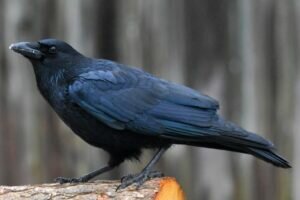

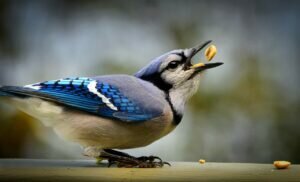

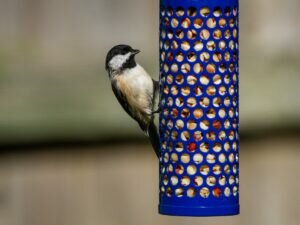
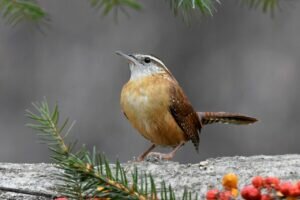

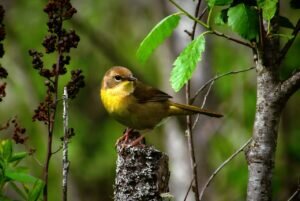
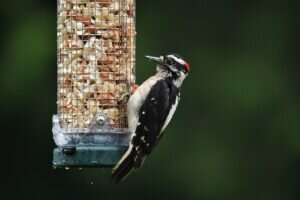
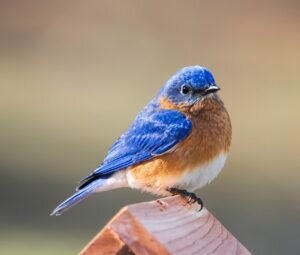

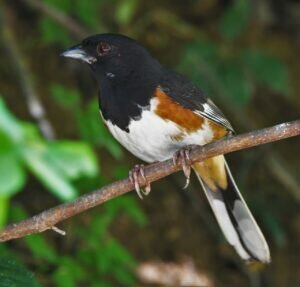
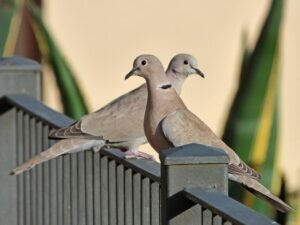
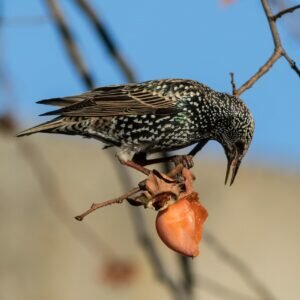
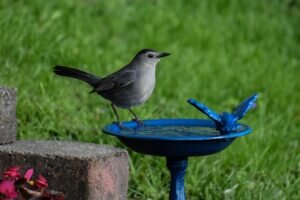
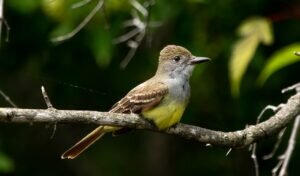
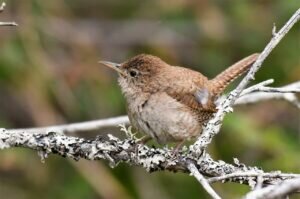
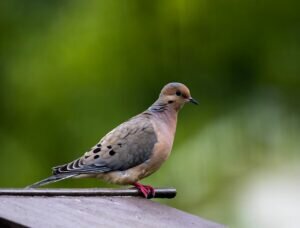


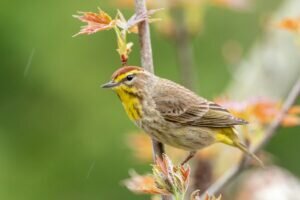

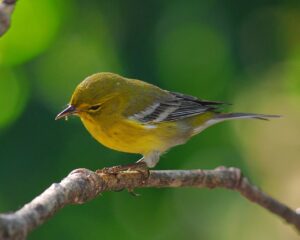


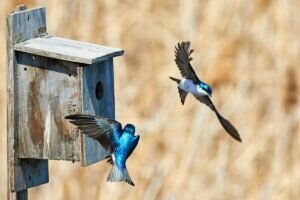

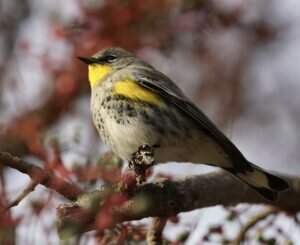
3 thoughts on “Top 29 Beautiful Backyard Birds in Florida 2022”